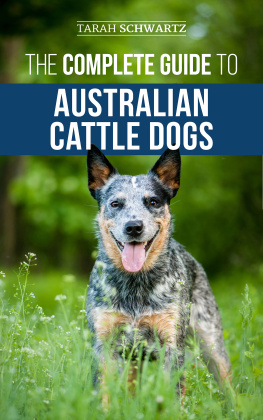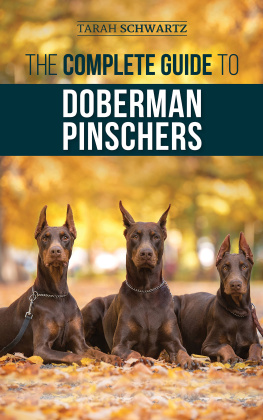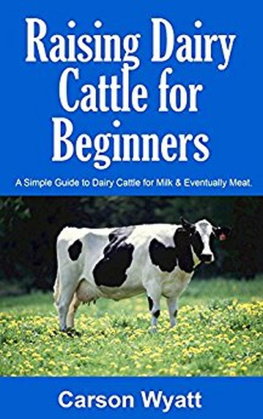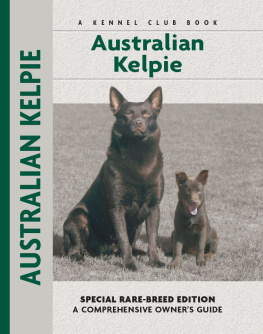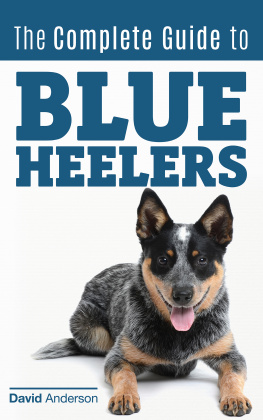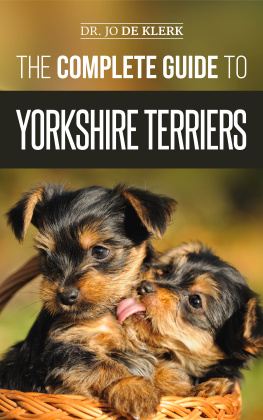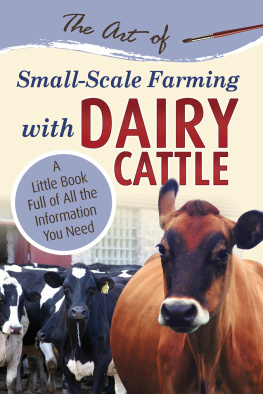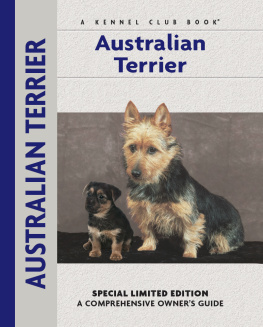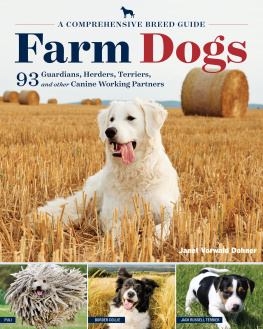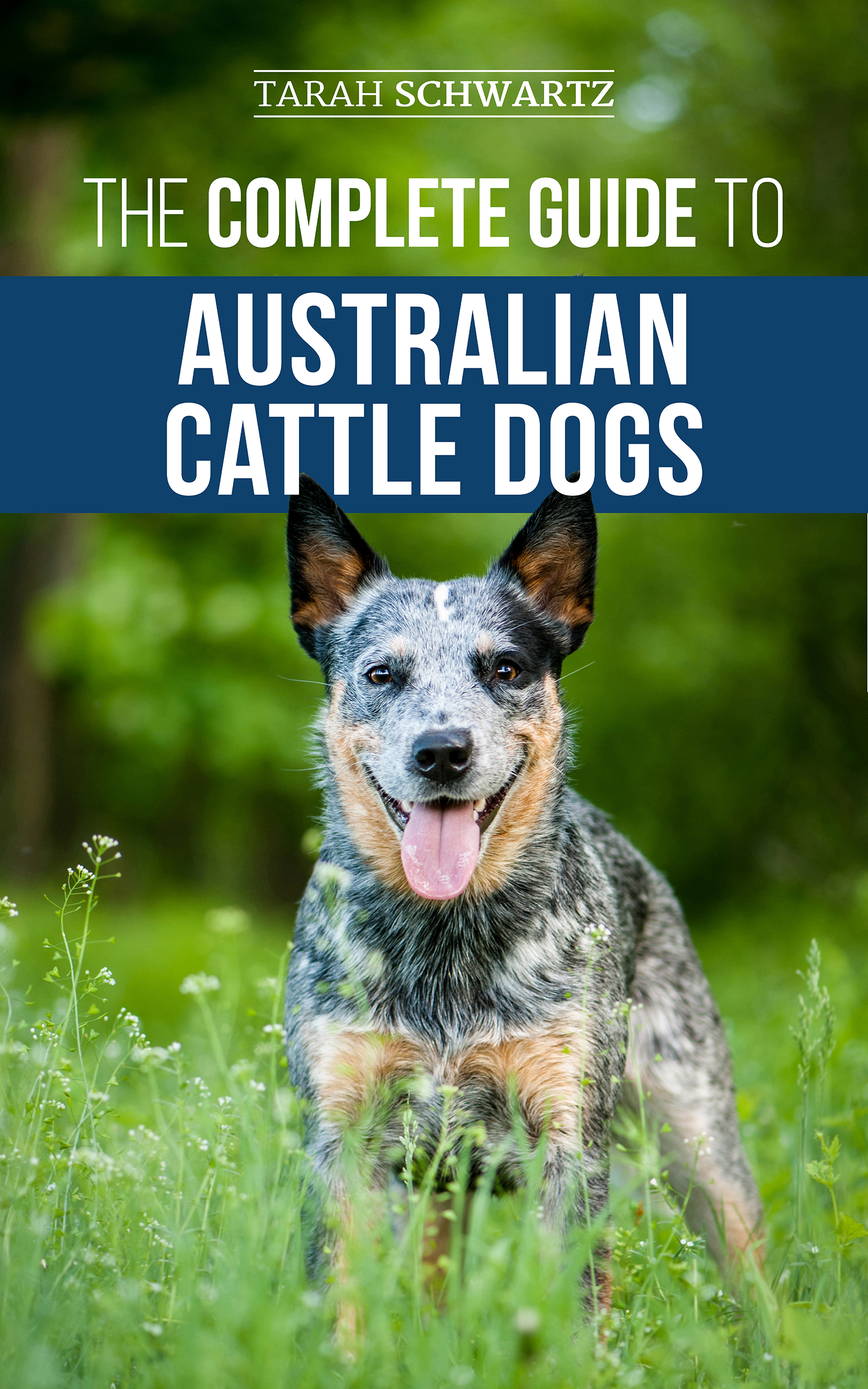Table of Contents
LP M edia Inc. Publishing
Text copyright 2 019 by LP Media Inc.
All rights reserved.
No part of this book may be reproduced or transmitted in any form or by any means, electronic or mechanical, including photocopying, recording, or by an information storage and retrieval system - except by a reviewer who may quote brief passages in a review to be printed in a magazine or newspaper - without permission in writing from the publisher. For information address LP Media Inc. Publishing, 3178 253rd Ave. NW, Isanti, MN 55040
www.lpmedia.org
Publication Data
Tarah Schwartz
The Complete Guide to Australian Cattle Dogs ---- First edition.
Summary: Successfully raising a Australian Cattle Dog from puppy to old age --- Pr ovided by publisher.
ISB N: 978-1-71032-9-728
[1.Australian Cattle Dogs --- No n-Fiction] I. Title.
This book has been written with the published intent to provide accurate and authoritative information in regard to the subject matter included. While every reasonable precaution has been taken in preparation of this book the author and publisher expressly disclaim responsibility for any errors, omissions, or adverse effects arising from the use or application of the information contained inside. The techniques and suggestions are to be used at the readers discretion and are not to be considered a substitute for professional veterinary care. If you suspect a medical problem with your dog, consult your veterinarian.
Desig n by Sorin Rdulescu
First pap erback edition, 2019
The Complete Guide to Australian Cattle Dogs
Tarah Schwartz
Chapter 1
The Australian Cattle Dog
What Is an Australian Cattle Dog?
The reason this breed is so loved by ACD enthusiasts is for their unique qualities. They are well known as being velcro dogs, who quickly establish a bond with their owners and live to love them! They are highly intelligent and easy to train, despite their stubborn streaks. They typically handle discipline well and keep trying harder to please you, in most cases your praise is enough as reward for good behavior. Their greatest joy in life is to not leave your side, most love to go everywhere with you - car rides, in the boat, or 4 wheeler, anywhere they can fit! They are known also for their great ability to be versatile; they have been personal protection dogs, scent tracking, therapy, duck retrieving dogs, and many other uses among their traditional use as a herding dog - making them a uniquely utilitarian breed.
Kelsey Bolton
Flintlock Farms
A ustralian Cattle Dogs are compact, muscular herding dogs that originated in Australia. Originally bred to move cattle, they are resilient and intelligent dogs capable of driving cattle over long distances. As herders, they are intense, driven working dogs that have a bit of an independent streak. Australian Cattle Dogs are credited with having an enormous impact on the beef industry in Australia. Without the breed, moving cattle across the vast landscape of Australia would have been immensely difficult. Their athleticism has also helped the breed succeed in a variety of modern-day dog sports. As pets, Australian Cattle Dogs are affectionate and e nergetic companions.
Although the breed is most commonly referred to as the Australian Cattle Dog, the dogs are also sometimes called Red or Blue Heelers, Queensland Heelers, ACDs, or simply Cattle Dogs. Red or Blue Heelers typically reference the dogs coloring as being either red or blue with white ticking. The name Queensland Heeler originally helped differentiate the dogs being bred in Queensland, Australia, from those being born in New South Wales. However, since Australian Cattle Dogs can now be found all over the world, the moniker Queensland Heeler is now nothing more than a nickname. As the most popular breed created to move cattle, the Australian Cattle Dog is often referred to as just the Cattle Dog.

The Australian Cattle Dog is a short-haired breed that requires relatively little grooming. The smooth double coat can be maintained with weekly brushing and an occasional bath. The breed is well-known for its distinctive coat colors. Although puppies are born white, they develop either blue or red coloring at aroun d four weeks of age.
The Australian Cattle Dog was first recognized by the American Kennel Club (AKC) in 1980. After a brief period in the Miscellaneous class and Working Group, the breed was eventually assigned to the Herding Group. In terms of popularity, the AKC ranks the breed as 55 out of 193 recognized breeds. The breed is a popular choice among competitors in agility and obedience. In addition to their success as herders, Australian Cattle Dogs can also be found competing in dock diving, fly ball, and nose work. Their incredible intelligence and trainability make them ideal partne rs in any dog sport.
Australian Cattle Dogs are quite healthy, but there are a few genetic disorders that are common to the breed, including hip dysplasia, progressive retinal atrophy, and deafness. Breeders are actively working to eliminate these disorders from the breed. According to the AKC, most Australian Cattle Dogs have a life span of ab out 12 to 15 years.
History of the Australian Cattle Dog
In the 1840s, George Elliot of Queensland, Australia, was on a quest to create the ideal working breed. As the owner of multiple cattle stations, he recognized the difficulty in moving cattle across rugged terrain to the market in Sydney. He began crossing Collies with tamed Dingoes. Dingoes were used because of their stamina and ability to work independently. The offspring of these crosses were impressive workers, but fellow cattlemen Jack and Harry Bagust felt that they could still improve upon the breed. They crossed the dogs with Dalmatians to instill a love of horses, and Black and Tan Kelpies to improve the breeds work ethic. The Dalmatian added the breeds signature speckled coat, while the Black and Tan Kelpies are responsible for the dark masks and tan markings that can be found on the modern-day Australian Cattle Dog. The Bagusts only kept the puppies that they felt were closest to their ideal dog.

As word spread about the Bagusts hardworking new breed, the breed became highly sought after by cattlemen and drovers across the country, with the blue-coated variety ultimately becoming more popular than the red. As cattlemen began to breed their own lines, the name Queensland Heeler was given to those dogs born in the state of Queensland. Although some breeders attempted to alter the breed further, it was done with relatively little success. So breeders chose instead to focus on the dogs working ab ility and body type.
In 1893, a breeder named Robert Kaleski drew up the first breed standard for the Australian Cattle Dog. He based the standard on the body type of the Dingo, as he believed that this was the ideal shape for a dog suited to cross the harsh wilderness of Australia alongside cattle. In 1903, his standard was approved by the Cattle and Sheep Dog Club of Australia and the Kennel Club of New South Wales.

